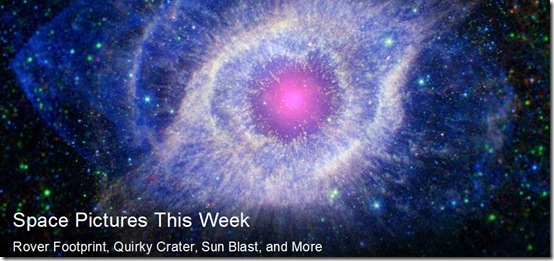
Space Pictures This Week: Rover Footprint, Sun Blast, More
By National Geographic News, 10 October 2012.
By National Geographic News, 10 October 2012.
1. The Sun's Fate?
Nearly 650 light-years from Earth, the Helix Nebula - pictured in a new composite image from NASA's Spitzer Space Telescope and the orbiting Galaxy Evolution Explorer (GALEX) - offers a glimpse of what our sun might one day look like.
Many scientists expect the sun to die in about five billion years and become, like the Helix, a planetary nebula. Bounded by expanding bubbles of glowing gas, planetary nebulae were misnamed because, when seen through early telescopes, the gas clouds resembled gas-giant planets such as Jupiter or Neptune.
2. Quirky Crater
The impact that created this crater on Mercury exposed a variety of subsurface materials - hence the colour variations in this image taken by NASA's MESSENGER orbiter and released October 4. Earlier this year the colourful, quirky crater was named in honour of Theodore Seuss Geisel, known to fans of colourful, quirky picture books as Dr. Seuss.
3. Galactic Vision
Photograph by Christoph Malin, TWAN
Seemingly bisected by a green laser, visible portions of the Milky Way rise over Zugspitze, the highest mountain in Germany. The laser, fired from an atmospheric research station, is part of a project to water distribution in the atmosphere, according to photographer Cristoph Malin, who submitted this picture to the night-sky photography community The World at Night (TWAN).
4. Flaring Up
Though many times the size of Earth, this solar eruption - captured in extreme ultraviolet wavelengths on October 4 by NASA's Solar Dynamics Observatory (SDO) - is considered a minor event, rising and falling fairly quickly.
Larger explosions are often associated with coronal mass ejections, or CMEs - clouds of superheated gas and charged particles hurled off the sun. If they hit Earth's atmosphere, the solar particles can spark auroras and even interfere with satellite communications systems and power grids. (See more pictures of solar storms.)
5. Midwest Puzzle
Captured by the Landsat 5 satellite over Kansas, a false-colour satellite image shows vegetation as red and brown. Farms appear as rectangles or circles, depending on the irrigation system employed. (See NASA's top Landsat pictures.)
6. Cosmic Mosaic
Cemented by a natural iron-nickel alloy, olivine crystals add a Midas touch to a sliver of meteorite in a picture released with a recent study published in the journal Nature.
Using the European Space Agency's Herschel Space Observatory, the study authors detected magnesium-rich olivine crystals around the star Beta Pictoris, about 63 light-years from Earth. This composition is also seen in comets created from the by-products of planet formation in our solar system - suggesting that planet formation in the Beta Pictoris system may have proceeded much as it did around the sun, even though the faraway star is much bigger and brighter than our own.
7. Helmet Nebula
Shown in a picture captured for the 50th anniversary of the European Southern Observatory in Chile on October 5, nebula NGC 2359, aka Thor's Helmet, is nearly 15,000 light-years from Earth and over 30 light-years across. The "helmet" is a cosmic bubble - the result of powerful winds from a star within the gas-and-dust cloud.
8. Rover Footstep
Between snapping photos of Mars's horizon and ancient streambeds, NASA's Curiosity rover did a bit of shoe gazing with its navigational camera (Navcam) on October 3. The rover's distinct, zigzagging tread pattern features cut-outs that etch the Morse code for "JPL" into the Martian soil-short for "Jet Propulsion Laboratory," the California home of Curiosity's mission command.
But the repeating pattern isn't all about branding. "The purpose of the pattern is to create features in the terrain that can be used to visually measure the precise distance between drives," said Matt Heverly, the lead rover driver for Curiosity at JPL, said in a statement.



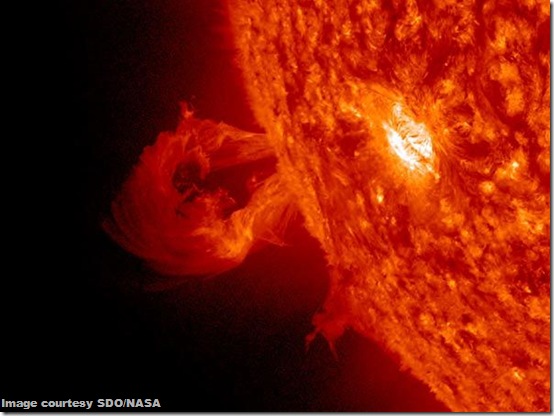
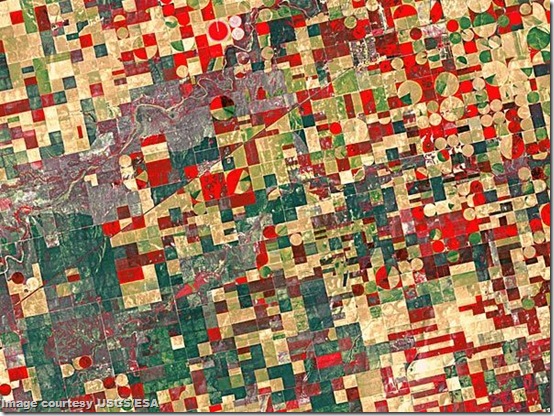
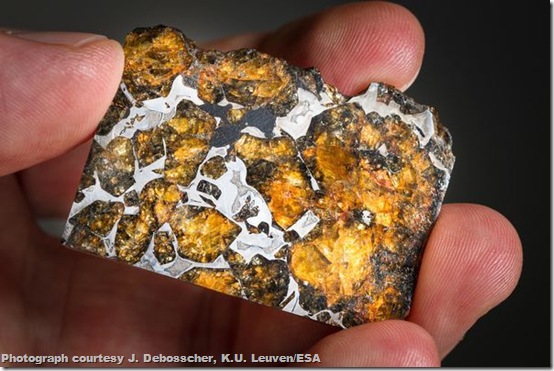
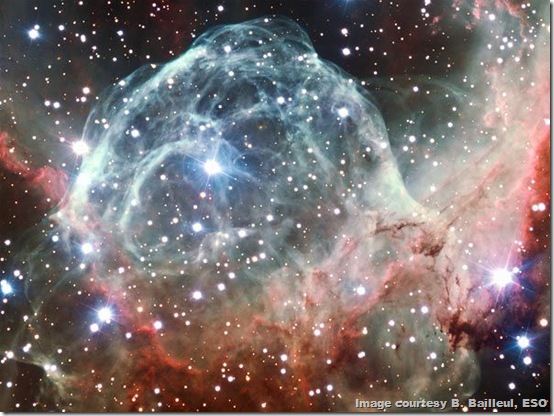
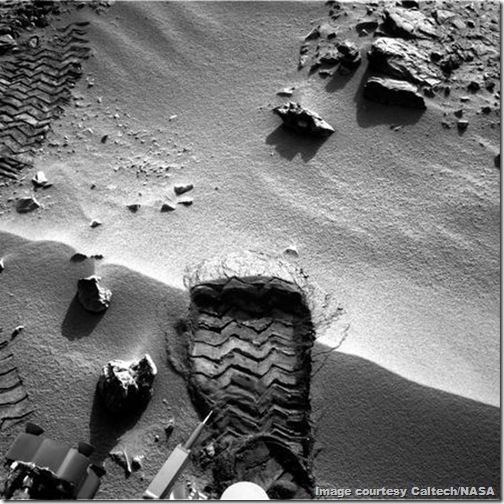
No comments:
Post a Comment
Please adhere to proper blog etiquette when posting your comments. This blog owner will exercise his absolution discretion in allowing or rejecting any comments that are deemed seditious, defamatory, libelous, racist, vulgar, insulting, and other remarks that exhibit similar characteristics. If you insist on using anonymous comments, please write your name or other IDs at the end of your message.